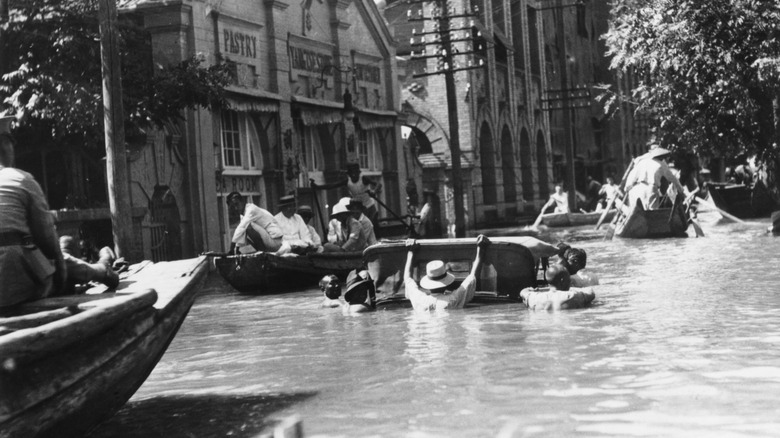The Deadliest Flood In History That No One Talks About
Our history is laden with massive floods that have wiped out cities and civilizations. In the aftermath, entire worlds were drowned, giving way to the underwater cities that captivate the masses to this day (via Insider). From the story of Noah's ark to the recent devastation caused by Hurricane Harvey, it's no secret that inclement weather can take down powerful nations in one fell swoop. There is, however, one massive flood that, while not officially a secret, rarely gets the attention it deserves.
This flood is the Central China flood which took place in 1931. Disaster History reports that upwards of 2 million people died when this perilous overflow ravaged the land. History reports that number could even be as high as 3.7 million. In addition to the fatalities incurred, tens of millions more people were touched by economic devastation and/or injuries that were the direct result of this flood. Its history, while somewhat hidden, is a humbling reminder of how little we really control.
Environmental responsibility and unequal wealth distribution
When heavy rain, snowmelt, and multiple cyclonic storms combined to create this catastrophic event, approximately 52 million people were adversely affected (via Disaster History). In the end, one of the most populous regions throughout the world wound up under water. While both human interference and natural disaster played a part, there's no denying that this flood exemplifies the negative impact human technology can have on the environment. Were it not for rampant deforestation and the overuse of river dyke networks, this disaster could have been reduced.
As it stands, the Central China flood, historically referred to as the Yangzi-Huai flood, involved several major waterways including the Grand Canal, the Yellow River, and the Pearl River to name a few. Not surprisingly, poor people in the region were disproportionately affected by drought, famine, widespread disease, and further economic devastation in its aftermath. If this flood were to receive more attention, it could serve to highlight issues of environmental responsibility and unequal wealth distribution as they relate to phenomenal natural disasters.
